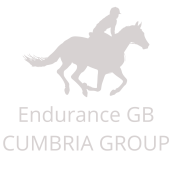Feeding the Endurance Horse
Horses in the wild spend between 16 and 20 hours of each day feeding and have the gut of a ‘trickle feeder’ ie a small stomach and huge hindgut where bacteria ferment the food in a watery environment. They manage on fibre alone and choose herbs to achieve a balanced diet.
Riding horses are physiologically the same despite man’s tinkering and so it is essential that we keep as near as possible to the wild model to avoid stress.
A horse will eat 2-2.5% of its body weight per day of which at least 1% should be fibre. Eg 500kg horse will eat 10-12kg/day including at least 7kg of fibre.
An endurance horse needs;
- To sustain a moderate level of activity for long periods of time
- Lots of water and electrolytes
- Body and brain fuel
- To be able to recover quickly
- To keep cool
The diet should include the following food groups; Carbohydrate, Fibre, Fat and Protein along with vitamins and minerals. Horses on an increased workload sometimes lose their appetites however they still need large amounts of fibre, increased energy requirements but hardly any more protein.
Carbohydrate - energy to move, sugars for brain.
Starch is broken down into sugars and absorbed into the bloodstream from the small intestine. Excess will pass into the hindgut causing rapid fermentation and this increase in acidity can lead to scouring, colic, laminitis and excitable behaviour. Most of the sugar needed can come from fibre. Even feeding too much of the ‘cooked’ grains can be risky. Provides 17MJ/Kg of Digestible Energy.
Fibre
This passes straight to the hindgut where it undergoes bacterial fermentation giving rise to volatile fatty acids (VFA) which are an important energy source for the horse. A healthy hindgut means correct production of B vitamins and non-essential amino acids. Fibre in the hindgut provides a reservoir for water and electrolytes. It is also essential for healthy gut function in keeping things moving! Provide variable amounts of Digestible Energy depending on type.
Fat – energy/glycogen sparing effect
Absorbed from small intestine. Need 250-500mls/dayto be a worthwhile energy source and antioxidants are required to aid utilisation. Provides 28MJ/Kg Digestible Energy (twice that of carbohydrate and protein) so a large amount of energy is available in a small amount of feed.
Protein – cell renewal
It is only needed in small amounts to supply ‘essential’ amino acids (ie those which cannot be made in the hindgut). Excess cannot be stored in the body so are broken down, producing heat and excreted in the urine (using valuable water). Smelly urine = too much protein. Provides 16.8MJ/Kg Digestible Energy.
So, what exactly should we feed?
- FIBRE…high levels
- Hay, Haylage, grass, chopped products, sugar beet
- FAT…high levels
- Cooking oil, oil rich pellets
- ESSENTIAL AMINO ACIDS….low levels
- Excellent grazing, a wide variety of legumes, feed balancer with ‘quality’ protein
- STARCH …low levels
Chopped fibre eg; Dengie range including Hi Fi, Baileys Alfalfa blend
Can easily be mixed in a bucket. Look for low or unmolassed ones as they often come with an added coating. Alfalfa is a legume and therefore high in protein so don’t feed in too large quantities.
Sugar beet
High in digestible fibre, good for the hind gut, good for adding water to the ration (remember horses designed to eat vegetation which has a high moisture content) and brilliant for making ‘sugar beet water’
Feed balancer eg Baileys Lo cal, Top Spec, Dobson and Horrell Ultimate balancer
Contains essential amino acids, vitamins and minerals so you know the horse is getting all the nutrients it needs. It is low in digestible energy, designed to be fed alongside fibre and extra oil can be added for increased energy requirements. It is brilliant for ‘good doers’.
High Fat feeds eg; Baileys Outshine, Saracen Equijewel
Take the form of pellets/nuggets and so are easier to feed than cooking oil. They often have the necessary antioxidants included. Very high digestible energy (up to 24MJ/Kg) meaning that a small quantity will have a large effect whilst leaving room for a large amount of fibre.
COMPETITION DAYS
Before the ride
- Lots of fibre (haynet available at all times) as the hindgut is the fuel tank and water reservoir.
- Don’t change the composition of the feed.
- Don’t feed a bigger breakfast.
At the ride
- Tie up with a haynet
- Always have water- plain, added electrolytes and sugarbeet
- water so that the horse can choose
- Remember ‘trickle feeder’ so feed small snacks at every crewpoint and checkpoint eg carrot, apple, handful soaked sugarbeet, bunch of grass.
- Raceriders should feed after vetting as chewing can push up the heart rate.
- Gut sounds heard at the vetting will be better in an animal that has been snacking on the way round.
After the ride
- Fibre/haynet as hindgut will need refilling.
- Electrolytes lost in sweat will need replacing so offer selection of waters again
- Horse may be offered a small feed, extra wet of the usual composition.
This article has been ‘distilled’ by Jill Templeton from Sally Flatman’s brilliant presentation at a previous training day. It is not the ‘definitive guide’ as horses are individuals but will hopefully provide some useful information.

